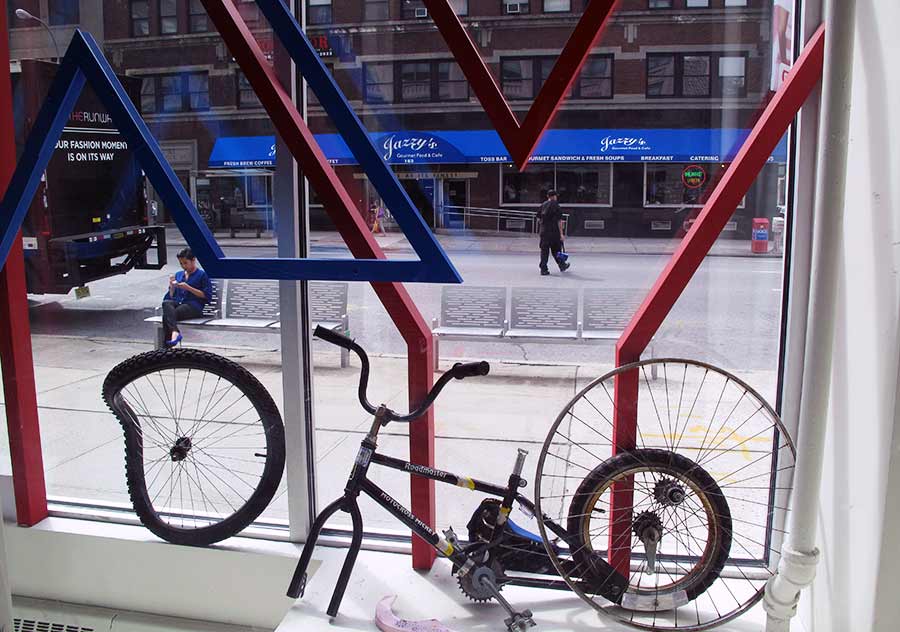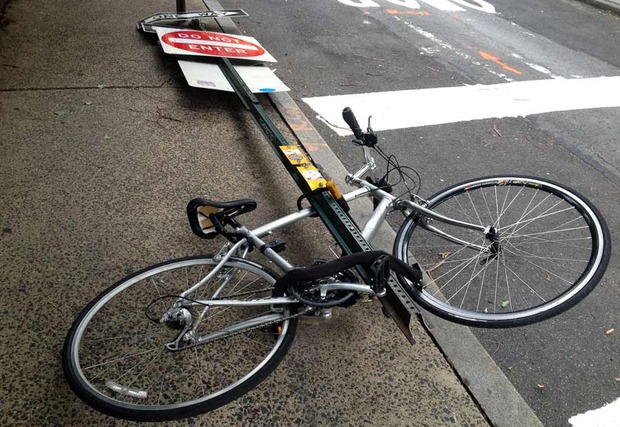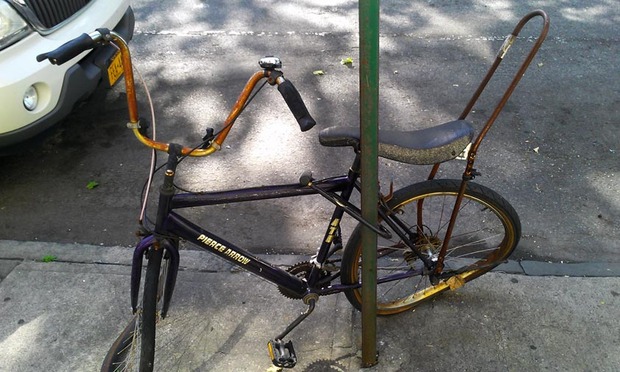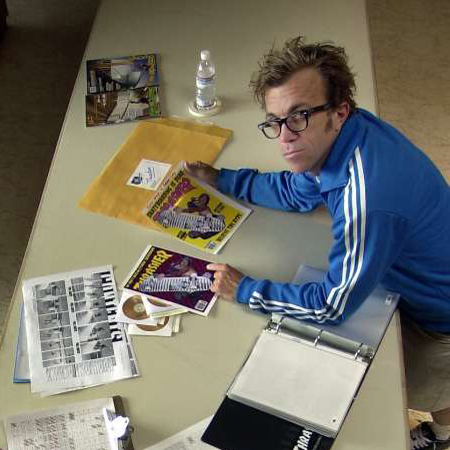Abandoned Bike Project
Bicycle skeletons evoke stories in a WNYC art display


If you live in a city you’ve likely seen one: a bicycle chained to a rack or sign post for weeks, months or years. Forsaken or simply forgotten, it rusts and decays in the elements and is pillaged for parts, losing a wheel, then the seat, the handlebars and the chain, until all that is left is a twisted metal skeleton.
Of the hundreds of bikes locked and languishing on New York City blocks, several have been liberated and donated by the Department of Sanitation and the youth service charity Recycle-A-Bicycle and are now on display in the windows of the Jerome L. Greene Performance Space at WNYC/WQXR in downtown Manhattan. The humble but enchanting exhibit—curated by Transportation Nation, a reporting project of WNYC—also includes a slideshow of photos of abandoned bicycles submitted by listeners.

“One of the most interesting things about this as an art project is how we naturally come up with stories for why a bike is the way it is and how it got that way,” says Transportation Nation reporter and producer Alex Goldmark. “If you want to spend a few minutes indulging your imagination, you can come up with all kinds of interesting stories for why that ancient blue roadster lost the rubber on its wheels and who rode it and when they rode it.”
The exhibit is part of a larger project exploring why there are so many abandoned bikes in NYC. In April, Goldmark asked WNYC and Transportation Nation listeners and readers to submit photos of abandoned bikes in their neighborhoods, along with a geocode of each bike’s location. Goldmark expected to receive maybe 50 photos, but instead he got more than 500. He was struck not only by the number of submissions but by the personal attachments people formed to the bikes.


“We had no idea that people would start confessing to abandoning their bikes or that people could name or talk about, or had strong feelings about the abandoned bike in their neighborhood,” Goldmark said, “but of course it makes sense because they themselves have been passing by the bikes on their walks to work every day for a year or two.”
Goldmark also reported on the city’s policy for reporting and removing abandoned bikes, the result of a “complicated mix of bureaucracy, city law and NYC’s density,” as he noted on Transportation Nation’s website. He discovered that the Department of Sanitation only removes bikes once they qualify as “derelict,” meaning they have decayed to the point that they can be considered junk. To report a single, abandoned bike, a person must call 311, a process that Goldmark has determined can take about 14 minutes. You can read about Goldmark’s full story on the Transportation Nation website.

The bikes will be on display through 4 September 2012 in the windows of the Jerome L. Greene Performance Space at WNYC/WQXR, located at 160 Varick Street.
Images courtesy of Transportation Nation












